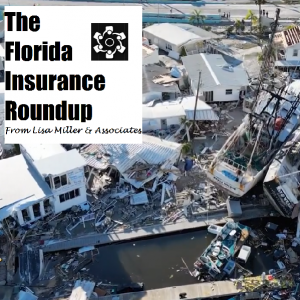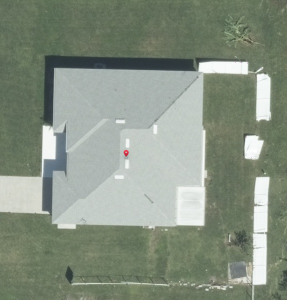Is it wind, water, or both?
 As insurance adjusters continue their near round-the-clock work evaluating Hurricane Ian’s tremendous damage on Florida homes and businesses, it’s even clearer now that most damage is from flooding rather than the wind. I recently sat down with Tom Diana, attorney and co-founder of the Zinober Diana & Monteverde law firm in Tampa to talk about the challenges our adjusters face in determining wind from water damage, how coverage is determined, who will pay, and the case law involved for those disputed claims that end up in court. We recorded our conversation as the latest episode of The Florida Insurance Roundup podcast, geared for field and desk adjusters and for homeowners.
As insurance adjusters continue their near round-the-clock work evaluating Hurricane Ian’s tremendous damage on Florida homes and businesses, it’s even clearer now that most damage is from flooding rather than the wind. I recently sat down with Tom Diana, attorney and co-founder of the Zinober Diana & Monteverde law firm in Tampa to talk about the challenges our adjusters face in determining wind from water damage, how coverage is determined, who will pay, and the case law involved for those disputed claims that end up in court. We recorded our conversation as the latest episode of The Florida Insurance Roundup podcast, geared for field and desk adjusters and for homeowners.
Diana has handled insurance defense for countless hurricane claims since the 2004-2005 series of eight hurricanes, including Ivan, which like Ian he said, was more a water event. “The real difficulty with Ian now, and all storms for that matter, is going to be when there is evidence of flood damage and wind damage in the same room at the same property. What is covered by the HO3 and what is not?”

Tom Diana, Esq, Co-Founder, Zinober Diana & Monteverde, P.A.
Today’s homeowners policies include the specific language “whether driven by wind or not” in excluding flood damage. Diana said the main case that will likely be cited in any Ian litigation will be Sebo v. American Home Assurance Company. In it, the Florida Supreme Court ruled that where two or more causes of a loss combine and where at least one of the perils is covered in an insurance policy, then the “concurrent cause doctrine” applies. That doctrine requires that when the sole or proximate cause of the loss cannot be attributed to the covered or the excluded peril, then the policy must cover all damages.
Some insurance companies have tried to limit the use of the doctrine by including “anti-concurrent causation” language in their homeowner policies. Diana said the case of Security First Insurance Company v. Czelusniak “kind of put this issue to rest in terms of what the policy covers…and is really going to control the guiding principles associated with the flood versus wind debate. That means that technically, if flood and wind or rain water, let’s say, combined to cause a loss to a specific item of personal property, or a specific area of damage, technically that is covered by the flood policy, and not the wind policy,” Diana told me. He cautioned though that the facts of an individual loss are really going to guide the outcome of a lot of trial and appellate court decisions involving Ian claims.

A commercially-available image of a Cape Coral property taken after Hurricane Ian, with fence damage noted.
We also talked about what he’s seen from bad actors who are trying to insert themselves between the policyholder and their insurance company, often just for the sake of taking over the claim to inflate its cost and their personal profit. Diana said that new technology, including aerial imaging, will help separate fact from fiction and stressed that clear communication with the policyholder is very helpful in settling the claim without going to court. “Adjusting an insurance loss is not a one-way street…It should not be an adversarial process,” he reminds us. You can read more – and better yet, listen to the full podcast here.
LMA Newsletter of 11-7-22

